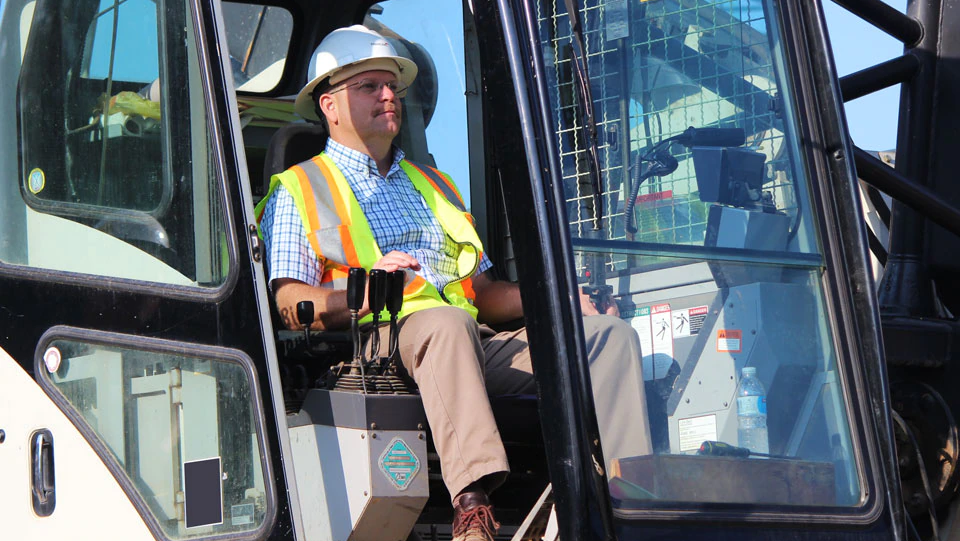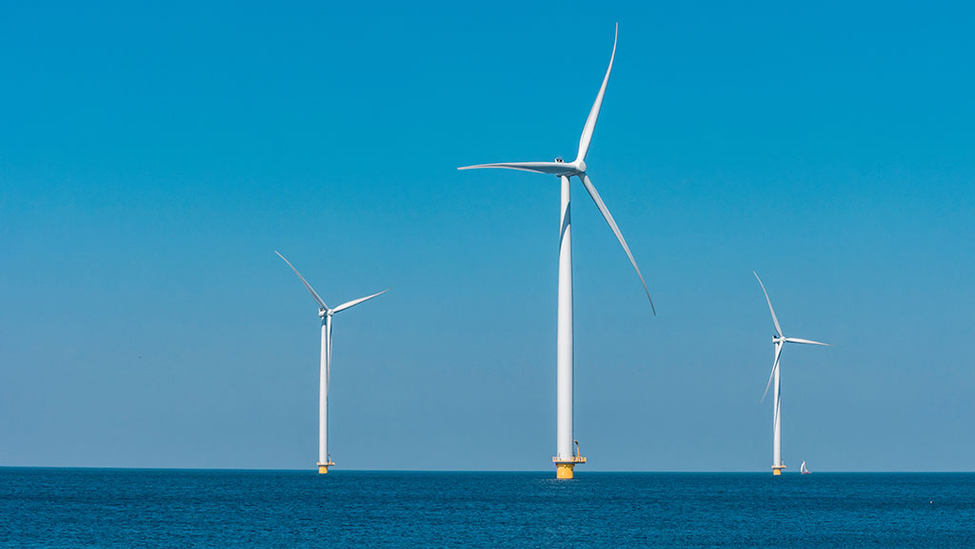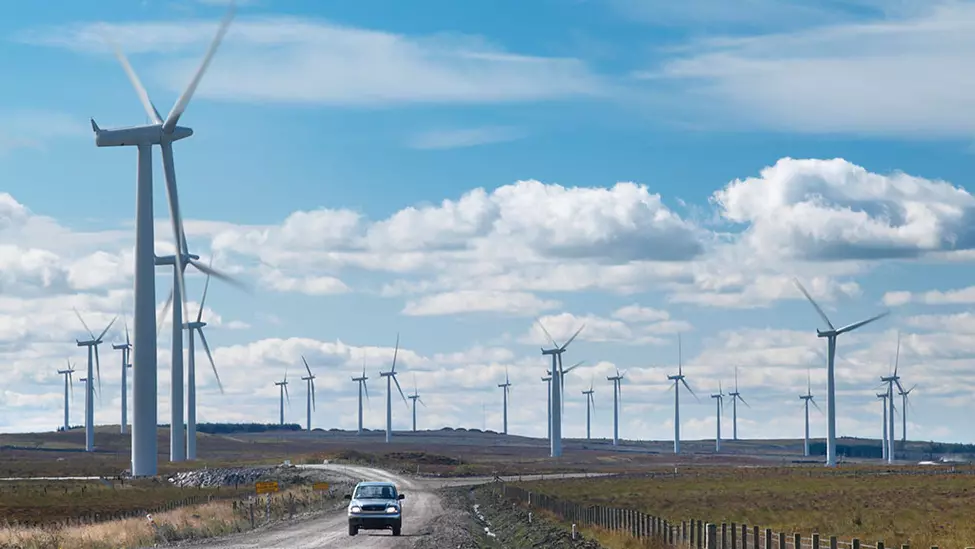Crane Safety Tips for Wind Farm Construction and Maintenance


An overturned crane at a wind farm site can lead to project delays and unanticipated costs. In addition to crane damage, there could be damage to wind turbine components, potentially disrupting operations. There’s also the risk of serious injuries or even fatalities.
Uneven ground conditions, high winds and other factors can make wind farms especially risky for cranes. In addition to developing a lift plan and focusing on safe crane operations, wind farm developers and contractors should consider the unique risks of cranes in transit at their site.
“From steep mountain-top sites in the northeast to soft ground conditions at farmland sites, crane operators face significant risks when walking cranes from pad to pad,” said Hank Dutton, a Travelers Risk Control Senior Regional Construction specialist. Here are some tips for safely moving and operating cranes associated with wind farm sites.
1. Make sure lift plans reflect wind farm risks.
Lift planning at wind sites involves unique hazards for crane operators to consider, including the presence of naturally windy conditions. Wind conditions can quickly change, creating a dangerous situation. It’s important to create a lift plan that reflects the conditions expected at the site and addresses the crane manufacturer’s limitations and specifications.
“Cranes at wind farms are larger, with longer crane booms that are often 300 or more feet in the air,” explained Dutton. “Ground conditions are really critical. The ground needs to be level within the crane manufacturer’s specifications and strong enough to resist the forces imposed by the crane, which can be greater than the weight of the crane, plus what is being lifted.”
Every lift should be considered a new lift, and operators and crews need to resist complacency. “Each site pad has a different set of conditions that needs to be evaluated carefully,” Dutton said. “Review every lift plan with crew members involved, including the crane calculations, ground condition requirements and the associated rigging drawing.”
2. Ensure riggers are trained in specialized rigging.
Rigging-related accidents at wind farms have the potential to create significant damage and cause fatal injuries. “These are high-risk operations,” said Jay Hurin, a Travelers Risk Control Construction Specialist. Specialized rigging designed to lift long, heavy turbine blades can require additional training. Therefore it is important to ensure the rigging crew has reviewed the rigging manufacturer’s instructions as well as the rigging drawing that should be part of the lift plan. If the rigging fails near a tower, it can injure workers on the tower, as well as the operator and the ground support crew. Risks include falling objects and being crushed by heavy equipment. There’s also the potential for costly damage to the crane and the turbine. “If something goes wrong, these tend to be serious accidents,” Hurin said.
3. Create a plan that addresses the hazards when moving the crane.
The crew involved in relocating a crane between wind turbine pads should follow the site plans, which have generally been developed by engineers. These plans should consider the crane manufacturer’s specifications for level, wind, as well as address the ground conditions needed to support the crane for the entire travel route. “Not only can injuries and damages be severe, but so too can delays in the project as turbine blades usually have long manufacturing lead times,” Dutton said. “When deviations from plans and best practices occur, potential problems can develop.”
For example, the site crew decides to take a shortcut through a field instead of staying on the prepared road. Or an operator attempts to travel the crane up or down a slope that is greater than the max slope allowed by the crane manufacturer. Cranes can overturn, leading to damaged cranes and wind turbine components, expensive debris removal and productivity delays while waiting for replacement cranes and other components.
4. Monitor weather conditions.
Extreme weather can be especially dangerous at a wind farm installation, where high wind events and thunderstorms can damage equipment and present deadly conditions for employees. It is recommended to have weather monitoring equipment on site as well as procedures established so employees know when to secure cranes and equipment. Train employees on safety protocol during dangerous weather conditions. Learn more about preparing your construction site for severe weather.
5. Re-evaluate site conditions after severe weather events and other site changes.
In addition to performing compaction testing at the start of the project, it’s important to re-evaluate ground conditions after a severe weather event or other changes to site conditions. For example, when clay soils are present, roadways can become slippery during and after a rainstorm, and present challenges when walking cranes.
“Analyze the conditions at the time that you’re trying to walk the crane,” Dutton said. Another concern is traction of the crane when coarse aggregate is used for the roadway. The crane’s tracks can start digging up the ground cover as it turns, and conditions can become dangerously unlevel. “Operators need to understand the crane manufacturer’s level requirements while walking cranes, including front-to-back and side-to-side,” Dutton said.
6. Exercise caution when disassembling a crane.
The large-scale dimensions of wind farms can make distances between pads too great to travel fully erected cranes. “There is an inherent risk in assembly and disassembly that people need to be aware of,” Dutton said. Employees can be injured or worse, if pins are removed in the wrong order or counterweight is removed too soon.
Transporting a disassembled crane on a truck also requires performing due diligence, including pulling the appropriate permits, making sure the load is properly secured, and ensuring that drivers are qualified by checking their motor vehicle records and confirming that they are properly licensed.
7. Follow road plans for established sites.
After construction of a wind farm is complete, access roads are sometimes closed or removed, such as at active farmlands. When significant maintenance needs to be performed and cranes are brought back on site, it’s important to first establish safe conditions. This can involve replacing access roads and installing crane pads to ensure that soil is stable for transporting and using cranes.
“It’s important to have a qualified professional evaluate and design a road plan that addresses things like slope, firmness, compaction and levelness for the entire route,” Dutton said. “Sometimes that means rebuilding access points across a large site.”
8. Have a commitment to safety at all levels.
“There really needs to be support from management, including the site superintendent,” said Dutton. “One bad decision or change in conditions can lead to a costly accident.” Creating a culture of safety can help crane operators, spotters and other members of the team feel more empowered to report potentially dangerous site conditions that might delay the day’s activities, but avert a potential disaster in the long run.
Travelers customers have access to several courses to help educate their employees about cranes and rigging, such as Professional Crane Operations, basic rigging, lift planning basics and online training for signal persons and riggers. Learn more about roles and responsibilities during crane operations and other ways Travelers can help you protect your wind farm with renewable energy insurance. You can also find an agent today.



